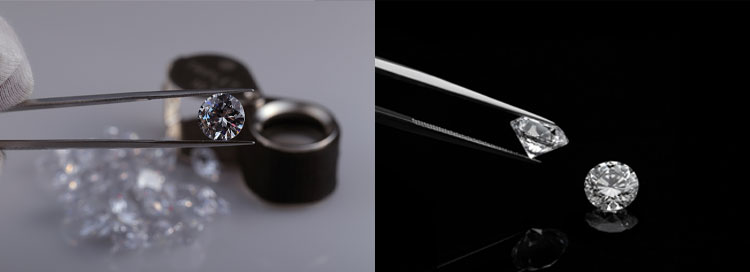Synthetic can mean artificial, or even fake. Synthetic can also mean artificial, copied, unreal, or even imitated. So what do we mean by “synthetic diamonds” in this case?
In the field of gemology, synthesis is a highly technical term. Technically, synthetic gemstones are artificial crystals with the same crystal structure and chemical composition as the specific gemstone created. As a result, “synthetic diamonds,” lab-grown diamonds, have the same crystal structure and chemical composition as natural diamonds. But this is not the case for many imitation or fake diamonds, which are often wrongly described as synthetic. This misinformation seriously confuses the meaning of the word “synthetic,” which is why most synthetic diamond producers prefer the term “lab-grown” to “synthetic.”
To fully understand this, it would be helpful to know some of the ways lab-grown diamonds are made. So far, there have been two techniques for growing and cultivating diamonds. The first and oldest technology is high pressure and high temperature (HPHT). The process starts with a seed of diamond material and then grows a complete diamond under extremely high pressure and temperature like nature.
The latest diamond synthesis method is chemical vapor deposition (CVD). During chemical vapor deposition, the reaction chamber is filled with carbon-rich vapor. The carbon atoms are extracted from the remaining gas and deposited on a diamond crystal wafer, which builds its crystal structure as the gem grows layer by layer. The important point is that both processes are very advanced technologies that can produce crystals with exactly the same chemical structure and optical properties as natural diamonds.

Synthetic cubic zirconia is a hard, colorless, and optically flawless crystal. Because of their low cost, durability, and appearance similar to diamonds, they have been the main alternative to diamonds (diamonds) since 1976.
There is another diamond imitation that can cause a lot of confusion — diamond-coated cubic zirconia (CZ) gems, which are produced using the same chemical vapor deposition (CVD) technology used to produce lab-grown diamonds. For CZ coated with diamond, a very thin layer of artificial diamond material is added to the top of the CZ. Nanocrystal diamond particles are only about 30 to 50 nanometers thick. That’s about 30 to 50 atoms thick, or 0.00003 millimeters. Or, I should say, very thin. CVD diamond-coated cubic zirconia is not a synthetic diamond. They are just glorified cubic zirconia diamond imitations that do not have the same hardness or crystal structure as diamonds. Like some glasses, CVD diamond-coated cubic zirconia has only a very thin diamond coating.
